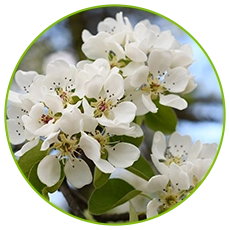Aug . 14, 2024 12:21 Back to list
Exploring the Advantages of Plum Pollen for Exporters in the Global Market
The Benefits of Plum Pollen for Exporters
Plum pollen, derived from the blossoms of the plum tree, is becoming increasingly popular among health enthusiasts and is making its mark in the global market. With its numerous health benefits, plum pollen is not only a nutritious addition to diets but also a lucrative product for exporters looking to tap into the growing demand for natural health supplements. This article explores the benefits of plum pollen and highlights how exporters can leverage these advantages to enhance their business prospects.
Nutritional Powerhouse
Plum pollen is rich in vitamins, minerals, proteins, amino acids, and antioxidants. It is particularly high in vitamin C, which is known for its immune-boosting properties. Additionally, plum pollen contains essential fatty acids, which promote heart health and help reduce inflammation. The antioxidants present in plum pollen may help combat oxidative stress in the body, reducing the risk of chronic diseases and promoting overall well-being.
Given these nutritional benefits, exporters can market plum pollen as an essential superfood for enhancing health and vitality. By emphasizing its natural origin and rich nutrient profile, exporters can attract a health-conscious consumer base that is increasingly looking for organic and wholesome products.
Rising Demand for Natural Products
There is a growing global trend toward natural and organic products, with consumers becoming more aware of what they put into their bodies. This trend is driving the demand for natural health supplements, and plum pollen perfectly fits this niche. The rise of the wellness industry, coupled with the popularity of superfoods, means that exporters can find a receptive market for plum pollen, both in retail and online platforms.
Moreover, as more consumers seek alternatives to synthetic supplements, exporters can position plum pollen as a natural and holistic alternative. This can lead to opportunities not only in health food stores but also in larger retail chains and specialty shops focused on natural products.
plum pollen benefits exporters

Exporting Opportunities
For exporters, the international demand for plum pollen presents numerous opportunities. Countries with a strong agricultural infrastructure can produce high-quality plum pollen and export it to markets around the world. Key regions for production include places with favorable climates for plum cultivation, such as parts of China, the United States, and Europe.
Exporters can also explore various avenues for distribution, including online sales, local health shops, and partnerships with wellness influencers. By packaging plum pollen in appealing formats—such as powder, capsules, or energy bars—exporters can cater to diverse consumer preferences and expand their market reach.
Educating Consumers
As with any niche market, educating consumers about the benefits of plum pollen is crucial for its success. Exporters should invest in marketing campaigns that highlight the health benefits and uses of plum pollen. Informative content—such as blog posts, videos, and social media campaigns—can effectively communicate how plum pollen can be integrated into daily diets.
Moreover, providing recipes and usage tips can encourage consumers to experiment with plum pollen, whether in smoothies, baked goods, or health drinks. The more consumers understand how to incorporate this superfood into their lifestyle, the more likely they are to become repeat buyers.
Conclusion
Plum pollen represents a growing segment of the natural health product market with numerous benefits for exporters. By leveraging its nutritious profile, responding to consumer trends toward natural products, and educating potential customers, exporters can uniquely position themselves in a competitive landscape. As consumers increasingly prioritize health and wellness, plum pollen stands out as a valuable product that meets their needs while offering profitable opportunities for exporters. Embracing this superfood can pave the way for success in the evolving landscape of health products in the global marketplace.
-
Premium Cherry Pollen for Pure Pollination & Different Types
NewsJul.30,2025
-
Artificial Pollination Solutions for Various Plant Pollen Types
NewsJul.29,2025
-
Artificial Pollination Solutions for All Plant Pollen Types
NewsJul.29,2025
-
Premium Plant Pollen for Pure Pollination & Pollen Block Solutions
NewsJul.29,2025
-
Artificial Pollination Solutions for Efficient Crop Yields
NewsJul.28,2025
-
Premium Cherry Pollen for Pure Pollination & Different Types of Pollen
NewsJul.28,2025